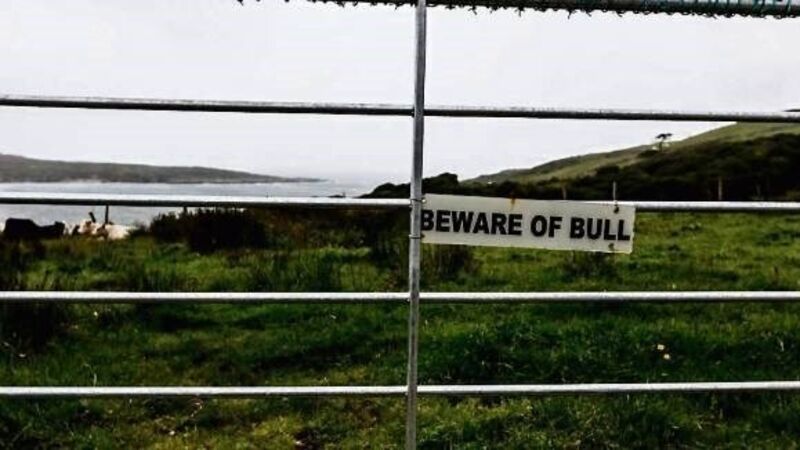The Occupier’s Liability Act - The responsibilities one has when someone suffers injury on their land

The Occupier’s Liability Act 1995 outlines the responsibilities an occupier has in respect of other people, who suffer injury on his land, writes .
The act lays out the different categories of entrant — visitors, recreational users, and trespassers.
The duty owed to a visitor is, logically, higher than the duty owed to a trespasser or recreational user.
This Act only covers the duty on occupiers to entrants in respect of the state of the premises, it does not govern harm done to entrants because of ongoing operations, for example, injury to a visitor by tree felling.
A visitor, for the purposes of the 1995 act, is someone who is on the land at the invitation of or with the permission of the occupier. This includes people like the postman, who have not expressly been invited onto the land.
The occupier owes what is known as the common duty of care to a visitor on his or her land. The occupier has to take reasonable care that the visitor does not suffer harm due to the state of the premises.
All of the individual circumstances must be taken into account here. A visitor must still take reasonable care for their own safety.
The duty of care owed to a visitor is not controversial, most people have no issue with ensuring that people who they allow on their land, are safe from harm and injury.
A recreational user is someone who is on a premises, with or without the occupier’s permission, without charge, for recreational purposes. This includes hill walkers and people crossing farm land to access national monuments.
A trespasser is any person on the premises who is not a visitor or a recreational user.
The duty of care owed to the recreational user and to the trespasser is the same.
The occupier owes a duty not to deliberately injure the recreational user or trespasser and not to act with reckless disregard for his or her safety.
However, there is a higher standard imposed on an occupier where they have provided a structure for recreational users on the premises.
The classic example here would be a play area provided on a farm for visiting children. The occupier has a duty to maintain such a structure.
This is controversial, as there is a common mind-set among landowners in this country that if a person trespasses on their land, anything that happens to them is their own problem.
It is a great annoyance to many farmers that they owe trespassers a duty of care at all. However, the duty owed to trespassers and recreational users is much lower than that owed to visitors.
There is no duty to act with reasonable care for the safety of a trespasser, only not to intentionally harm them and not to act with reckless disregard for their safety.
For example, a landowner cannot set traps for trespassers and recreational users, as this would be intentionally harmful.
A landowner would also be found to be in breach of their duty of care to a trespasser if there was a large, deep hole near the entrance of their property over which grass had grown to such an extent that the hole was invisible and had the appearance of a patch of grass, as this would constitute reckless disregard to the safety of a potential trespasser, in that they could easily fall into it.
In this case, the landowner would have a duty to warn.
Putting a warning sign up would help in such a case.
However, if there was such a hole in the corner of a field in the middle of land which is landlocked, it is less possible to foresee that trespassers would be in that area of the land and thus, there may be no duty to warn.
The 1995 act allows for several factors to be taken into account in determining the extent of the duty of care owed to trespassers in each individual case.
These include whether the occupier knew, or had reason to believe, that there was a danger on the premises; that the person on the property was likely to be on the premises; and that the person on the property was likely to be in the vicinity of the danger, and also includes whether there was any warning given by the occupier.
We must bear in mind here that a trespasser does not necessarily enter a property with the intention to commit a crime, and section 4(3) of the 1995 act provides that the duty owed to an entrant who is on the premises with the intention of committing a crime is not to injure them intentionally.
It is advisable to ensure that there are signs on your land warning of potential dangers, especially in areas of the land where it is foreseeable that people might cross.
info@walshandpartners.ie
www.walshandpartners.ie












